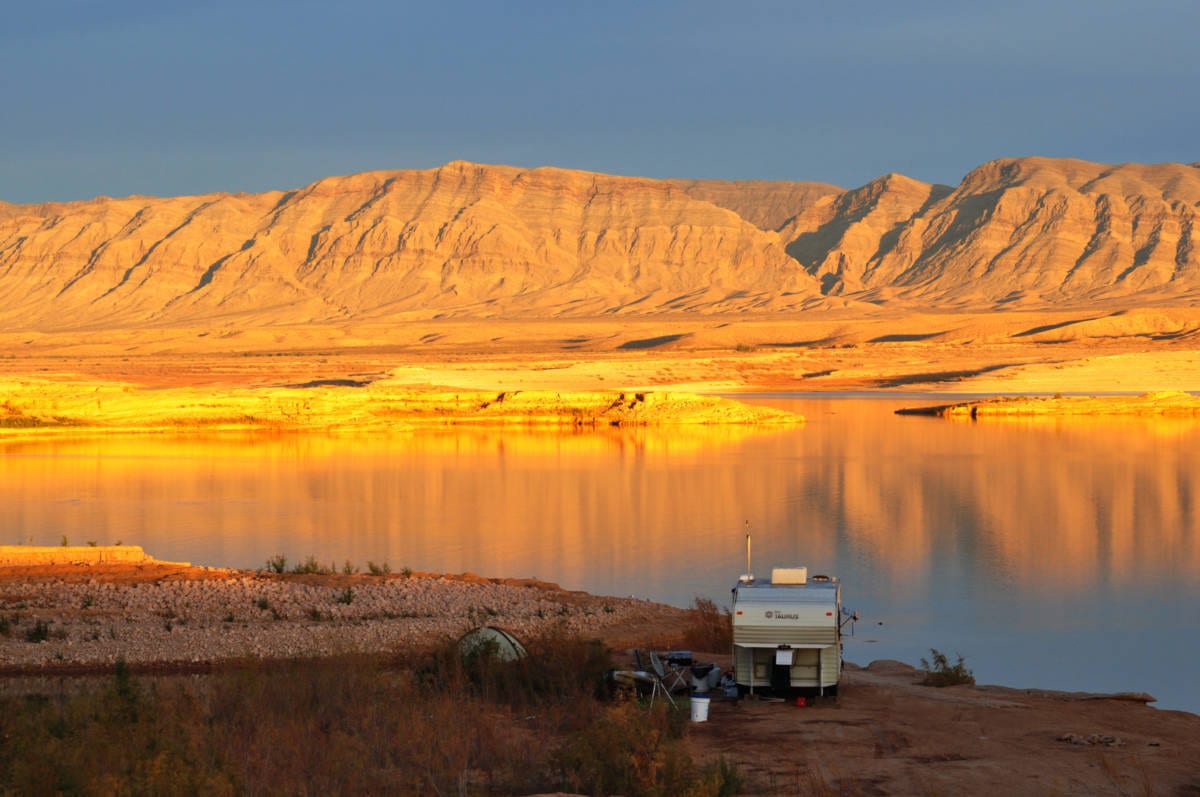
The Bureau of Land Management is moving forward with plans to resume work in southern Nevada’s Gold Butte region. The Gold Butte area is an important habitat for desert tortoises and other species and is home to rock art and other ancient cultural sites. The region is also a popular destination for recreation enthusiasts who enjoy hiking, camping, and exploring the area’s unique geology.
Due to safety and security concerns, BLM employees have not conducted field work in the Gold Butte area in northeastern Clark County since early 2014. With the support of the local community, BLM officials have determined that the conditions are now right to resume work. BLM archaeologists, law enforcement officers, and local agency leadership have all visited the area over the past month.
BLM Director Neil Kornze and BLM Nevada State Director John Ruhs toured Gold Butte yesterday along with Clark County Commissioner Marilyn Kirkpatrick and Captain James LaRochelle of the Las Vegas Metropolitan Police Department.
“We had an excellent visit to Gold Butte and we’ll be increasing our presence there in the months ahead,” Director Kornze said. “This area is a real treasure. We look forward to working with our local partners to restart the many important efforts we had underway.”
The group visited the Whitney Pockets area, which is popular with visitors who come to hike and view the singular geologic features, rock art, and other cultural resources. Some of the area’s famous red sandstone formations have been impacted by vandals. Nearby, a large Joshua tree had been illegally cut down and left onsite. There was also evidence that cattle have trammeled and overgrazed certain areas. The group also explored the famed Falling Man petroglyph site as part of their tour of the broader area. Time will be needed to make a complete assessment of the condition of the Gold Butte region.
Kornze praised the BLM Southern Nevada District Office staff for their patience while field work was suspended and for their ongoing collaboration with local partners to plan and develop projects focused on the restoration of key areas and the protection of ancient rock art sites and other irreplaceable cultural resources.
Some of the immediate project work that is envisioned includes assessing the damage to cultural heritage sites, partnering with the National Park Service on critical repairs to communications infrastructure, coordinating with Clark County on road maintenance, and establishing a route numbering system on designated roads to help visitors map their location and destinations. The BLM will continue to collaborate with nearby communities to develop plans for future projects that address the spread of noxious weeds and reducing the potential threat of wildland fire through hazardous fuels reduction projects.
“BLM employees in southern Nevada have been hard at work developing restoration plans for some of Gold Butte’s extraordinary resources,” said BLM Nevada State Director John Ruhs. “We look forward to continuing this important work with our partners and creating a positive future for this incredible area.”
The BLM manages more than 245 million acres of public land, the most of any federal agency. This land, known as the National System of Public Lands, is primarily located in 12 Western states, including Alaska. The BLM also administers 700 million acres of sub-surface mineral estate throughout the nation. The BLM’s mission is to sustain the health, diversity, and productivity of America’s public lands for the use and enjoyment of present and future generations. In fiscal year 2015, the BLM generated $4.1 billion in receipts from activities occurring on public lands.






